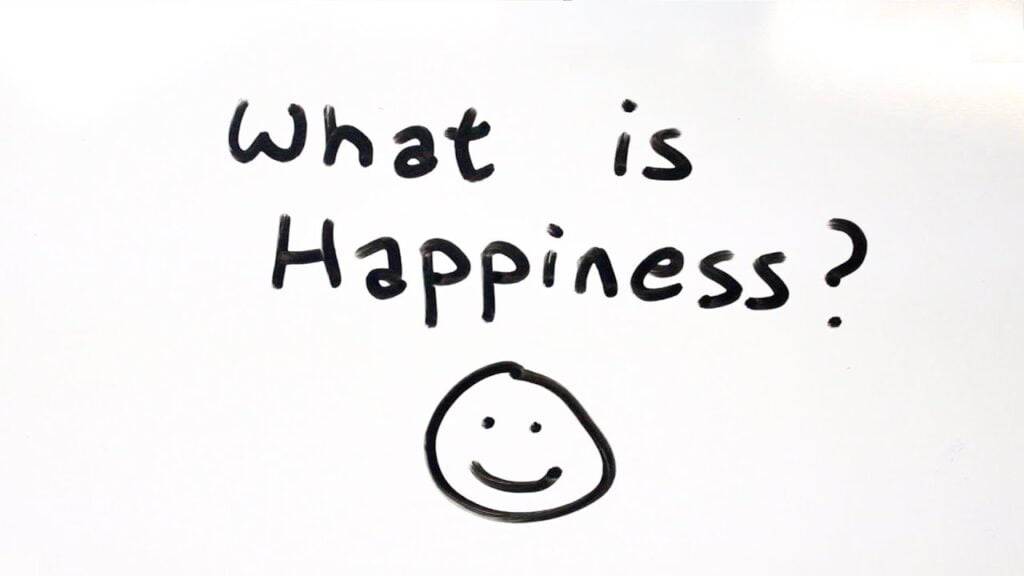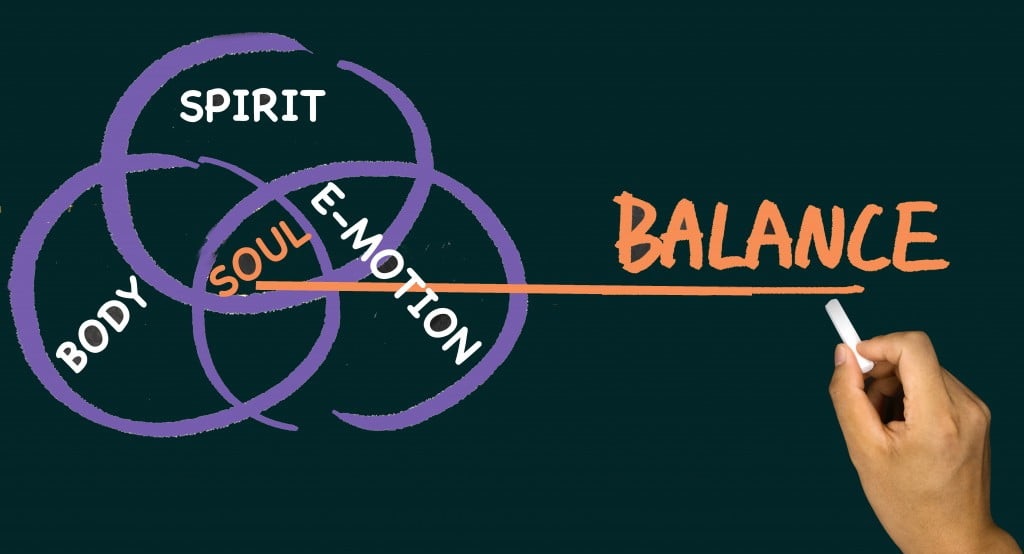Health
7 Tips for Healthy Weight Loss
Not only can it make you feel tired and low on energy, being overweight or obese can put you at higher risk of heart disease, type 2 diabetes, stroke, and some types of cancer. Plus, excess weight can take years off your life. What’s more, most people have trouble losing weight long-term—in fact, research has shown that 90% of people who lose weight will gain it back within five years . So how do you lose weight in a way that’s safe and effective? We’ve got seven ways for you to start healthy weight loss now.
(1) Don’t Skip Breakfast

Breakfast is an essential meal, but skipping it can ruin your day and set you up to overeat later in the day. Skipping breakfast increases your risk of obesity and weight gain. Eating a good breakfast will keep you energized throughout your morning so that you’re not tempted to reach for high-sugar snacks later on. Focus on protein; eating a high-protein breakfast has been shown to reduce cravings for carbohydrates by 60%. The easiest way to get enough protein is with some eggs—either cooked or as an omelet. And don’t forget about fiber! Fiber keeps you feeling full longer and prevents those blood sugar spikes that can lead to overeating later in the day.
(2) Eat More Fiber

The best weight-loss strategies center around eating more whole foods. When it comes to getting healthier, fiber is your best friend. Soluble fiber—found in beans, oats, and peas—dissolves into a gel-like substance that promotes feelings of fullness. Because fiber is digested slowly, it can help decrease hunger pangs and control blood sugar levels by slowing down glucose absorption, explains Pamela Nisevich Bede, R.D., a registered dietitian nutritionist at Abbott’s EAS Sports Nutrition Center in North Chicago, Ill. Insoluble fiber (found in whole grains) isn’t broken down by digestive enzymes but still increases satiety and helps prevent overeating later on.
(3) Stick To Smaller Plates and Bowls

According to a study published in Appetite, larger meal portions lead us to take in 14 percent more calories on average. The researchers say it may be because big plates or bowls make food appear more filling than it is. Regardless of what’s driving it, research suggests that between-meal snacks can be beneficial if they help stave off cravings and prevent mindless munching. Serving your meals on smaller plates could help you control portions better and eat less.
(4) Eat Slowly to Feel Full Faster

One of the easiest ways to trick your brain into feeling full is by eating slowly. According to a recent study published in The American Journal of Clinical Nutrition, when people ate their food at a slower pace, they reported feeling fuller—and lost weight over time. Plus, it’s easier to eat less if you’re not shoveling food in your mouth like there’s no tomorrow (which often happens when we’re rushing around). Want some tips on eating slowly? Put down your fork between bites and take a bite from another part of your plate before going back for seconds; count how many chews you take; and eat with other people so you can ask them questions while chewing. Also be sure to avoid these 20 bad habits that lead to overeating.
(5) Add Healthy Fats

Adding a bit of healthy fat to your meal, whether it’s avocado on toast or olive oil drizzled over steamed veggies, can make a meal more filling and satisfying. Plus, healthy fats are more difficult to store as body fat than carbs and protein, so they keep you feeling full longer. Adding healthy fats to meals—rather than piling them on top of already-plentiful carbs—is key if you want to lose weight safely . . . not quickly!
(6) Limit Sugary Drinks and Alcohol

Sugary drinks are high in calories and may cause your blood sugar to spike, which can leave you feeling hungry again soon after eating. Alcohol is also packed with extra calories that add up fast—and both drinks may lead to dehydration, which causes a drop in energy levels and can increase cravings. Skip these liquid calories and stick to no-calorie alternatives such as sparkling water or unsweetened iced tea instead. Avoid sugary cocktails or mixed drinks since they have a lot of calories from added sugars, syrups, and juices; replacing soda with diet soda does not reduce calorie intake unless it helps you cut back on regular soda. The nutrition information listed on restaurant menus is sometimes incorrect or incomplete; ask if items contain hidden fats or sugars.
(7) Cut Back on Salt (Sodium)

The U.S. Centers for Disease Control and Prevention (CDC) recommend consuming no more than 2,300 milligrams of sodium per day. Cutting back on salt is a simple way to slim down quickly and prevent high blood pressure, a common condition that can lead to heart disease and stroke later in life. It’s recommended that you follow food labels, as one teaspoon of salt is equivalent to 2,300 milligrams of sodium—no matter how many nutrition bars or crackers you eat! To start cutting back on salt intake: Eat at home: Cooking at home allows you to control your sodium content, but remember that fast food is notoriously salty.
Affiliate
Understanding Different Health Insurance Plans
Health insurance is an essential component of securing a healthy future. With a variety of coverage types and benefits available, it’s crucial to understand the different options to make informed decisions about your health insurance plan. Whether you’re looking for affordability or specific provider networks, knowing your choices is key to finding the right fit for you and your family.
Key Takeaways:
- There are various types of health insurance plans designed to meet different needs
- Marketplace plans come in different metal levels: Bronze, Silver, Gold, and Platinum
- Some plan types include Exclusive Provider Organization (EPO), Health Maintenance Organization (HMO), Point of Service (POS), and Preferred Provider Organization (PPO)
- Each plan type has its own network limitations and coverage rules
- Understanding costs and coverage levels is essential for selecting the right plan
Types of Marketplace plans
When it comes to shopping for health insurance, the Marketplace offers a variety of plans to choose from. Depending on your location, you’ll find Marketplace plans categorized into different metal levels – Bronze, Silver, Gold, and Platinum. These metal levels indicate the level of coverage and the amount you’ll pay in premiums and out-of-pocket costs.
Let’s take a closer look at the types of Marketplace plans available:
1. Bronze
Bronze plans provide the lowest upfront costs but also cover less of your medical expenses. These plans are a good choice if you’re generally healthy and don’t expect to need many medical services throughout the year.
2. Silver
Silver plans offer moderate coverage and strike a balance between monthly premiums and out-of-pocket costs. They can be a good choice if you anticipate needing medical services regularly.
3. Gold
Gold plans have higher monthly premiums but cover a larger portion of your medical expenses. If you prefer a plan that offers more coverage and are willing to pay higher premiums each month, a Gold plan might be the right fit for you.
4. Platinum
Platinum plans come with the highest monthly premiums but provide the most comprehensive coverage. If you have ongoing medical needs or anticipate needing extensive medical services, a Platinum plan may offer the financial protection you’re looking for.
In addition to the metal levels, Marketplace plans also come in different types. Some examples include:
- Exclusive Provider Organization (EPO)
- Health Maintenance Organization (HMO)
- Point of Service (POS)
- Preferred Provider Organization (PPO)
These plan types have their own network of providers and may have specific rules regarding referrals and coverage outside the network.
“Choosing the right Marketplace plan is crucial to ensure you get the coverage you need at a price that fits your budget. Consider your healthcare needs and budget when comparing the different types and metal levels of plans.”
| Plan Type | Network | Referrals |
|---|---|---|
| Exclusive Provider Organization (EPO) | Restricts coverage to in-network providers, except in emergencies | Not required |
| Health Maintenance Organization (HMO) | Generally limited to in-network doctors and hospitals, emergency coverage only | Required for specialist visits |
| Point of Service (POS) | Lower costs within the plan’s network, but coverage outside the network available | Required for specialist visits |
| Preferred Provider Organization (PPO) | Lower costs within the plan’s network, but coverage outside the network available | Not required |
Exclusive Provider Organization (EPO)
An Exclusive Provider Organization (EPO) is a managed care plan that offers comprehensive coverage within a specified network of doctors, specialists, and hospitals. With an EPO, you have access to a wide range of healthcare services, as long as you use providers within the plan’s network. This means that the EPO will only cover services rendered by in-network providers, except in the case of emergencies.
“An Exclusive Provider Organization (EPO) is a managed care plan that delivers extensive coverage through a carefully selected network of healthcare providers.”
By using providers within the network, you can benefit from coordinated care, professional partnerships, and streamlined communication between healthcare professionals. This ensures that you receive high-quality, efficient, and cost-effective care. It’s important to note that unlike other types of plans, EPOs do not typically require referrals for specialized care. This allows you to directly access specialists without the need for additional authorizations.
In an emergency situation where immediate medical attention is required, an EPO will provide coverage for out-of-network services. This ensures that you receive the necessary medical care when time is of the essence. However, for routine healthcare needs, it’s crucial to choose providers within the plan’s network to maximize your coverage and minimize your out-of-pocket expenses.
Benefits of an Exclusive Provider Organization (EPO) Plan
An EPO plan offers a range of benefits that make it an attractive choice for individuals seeking affordable and comprehensive healthcare coverage:
- Access to a robust network of doctors, specialists, and hospitals
- Coordinated and integrated care among providers within the network
- No requirement for referrals to see specialists
- Emergency coverage for out-of-network services
- Potential for lower premiums compared to other managed care plans
It’s important to carefully review the network of providers offered by an EPO plan before enrolling. Ensure that your preferred healthcare providers are included in the network to guarantee comprehensive coverage for your healthcare needs.
Understanding EPO Networks
EPO networks vary depending on the insurance provider and the geographical area. When exploring EPO plans, you’ll want to evaluate factors such as the number of doctors, specialists, and hospitals available within the network, as well as the geographic coverage area.
By familiarizing yourself with the network available to you, you can make informed decisions about your healthcare choices and select providers that align with your preferences and location. Consider factors such as proximity to your home or workplace, the reputation of the healthcare providers, and the availability of specialized services within the network.
Choosing an Exclusive Provider Organization (EPO) plan can provide you with affordable and comprehensive healthcare coverage. By utilizing the network of doctors, specialists, and hospitals within the plan, you can access quality care, enjoy coordinated services, and minimize your out-of-pocket expenses. In the event of an emergency, an EPO plan ensures that you receive necessary medical attention, even from out-of-network providers.
Health Maintenance Organization (HMO)

An HMO is a type of health insurance plan that focuses on providing limited coverage within a specific service area. It typically limits coverage to care from doctors who work for or contract with the HMO. This means that it may not cover out-of-network care, except in emergency situations.
HMOs often prioritize prevention and wellness by offering integrated care and emphasizing regular check-ups, screenings, and preventive treatments. These plans aim to keep individuals healthy and proactively address health issues before they become more serious and require costly interventions. By focusing on preventive care, HMOs aim to lower healthcare costs and improve overall health outcomes for their members.
One of the key features of HMOs is their emphasis on a coordinated and integrated approach to care. Under an HMO plan, there is typically a primary care physician (PCP) who serves as the central point of contact for all health-related needs. The PCP manages the individual’s healthcare and coordinates referrals to specialists as necessary. This coordinated approach ensures that individuals receive appropriate and timely care from the right healthcare professionals within the HMO’s network.
Note: HMOs have a service area, which is the geographic region or network of providers covered by the plan. It is essential to carefully consider the service area of an HMO when choosing a plan as it may impact the availability of doctors and hospitals in your preferred location.
Benefits of Health Maintenance Organization (HMO) plans:
- Coordinated and integrated care: HMOs provide a coordinated approach to healthcare, ensuring that individuals receive comprehensive and continuous care throughout their healthcare journey.
- Preventive care and wellness focus: HMOs prioritize prevention and wellness, offering a range of preventive services, health screenings, and wellness programs to keep members healthy and identify potential health issues early on.
- Cost savings: HMOs often have lower premiums and preventive care services at little or no cost, helping individuals manage healthcare expenses more effectively.
- Provider network: HMOs have a network of doctors and healthcare providers who work closely together, fostering collaboration and ensuring continuity of care.
Example of an HMO plan:
| Insurance Provider | Plan Name | Monthly Premium | Primary Care Physician | Specialist Referrals | Annual Deductible |
|---|---|---|---|---|---|
| Blue Cross Blue Shield | Preferred HMO | $250 | Required | Required | $500 |
Point of Service (POS)
Affiliate
Google Canada Careers Toronto
Google Canada Careers Toronto
Retention and Expansion Sales Specialist, Security, Google Cloud
corporate_fare Google place Toronto, ON, Canada ; Ottawa, ON, Canada ; +3 more laptop_windows Remote eligible
Apply
info_outline X Info
Note:
Google’s hybrid workplace includes remote and in-office roles.
By applying to this position you will have an opportunity to share your preferred working location from the following:
In-office locations: Toronto, ON, Canada; Ottawa, ON, Canada; Waterloo, ON, Canada.
Remote location(s Alberta, CA; Quebec, CA
Note:
Google’s hybrid workplace includes remote and in-office roles.
By applying to this position you will have an opportunity to share your preferred working location from the following:
In-office locations: Toronto, ON, Canada; Ottawa, ON, Canada; Waterloo, ON, Canada.
Remote location(s): Alberta, CA; Quebec, CA.
~5 years of experience in a sales or account management role
~3 years of experience in SaaS sales
~3 years of experience in closing high-touch agreements
~ Ability to travel up to 25% of the time
Preferred qualifications:
~ Bachelor’s degree in business administration, communication, or a related field
~5 years of experience in a sales or account management role
~ Experience in the technology industry
~ Experience in sales
~ Understanding of enterprise business models and pricing
About the job
As a Retention and Expansion Sales Specialist, you will be responsible for managing and growing a portfolio of global accounts by renewing, upselling, and cross-selling.
You will be proficient across Google Cloud’s Security product SaaS offerings and effectively represent Google Cloud’s full suite of products and services by using technical, organizational, and customer knowledge to influence clients and grow business.
Google Cloud accelerates organizations’ ability to digitally transform their business with the best infrastructure, platform, industry solutions and expertise.
We deliver enterprise-grade solutions that leverage Google’s cutting-edge technology – all on the cleanest cloud in the industry.
Customers in more than 200 countries and territories turn to Google Cloud as their trusted partner to enable growth and solve their most critical business problems.
Responsibilities
Develop and execute account plans to achieve renewal and growth/expansion goals.
Manage and grow a portfolio of strategic accounts.
Identify and qualify new opportunities within existing accounts for upsell.
Develop and deliver sales presentations and proposals, and stay up-to-date on a full suite of Google Cloud Security and Mandiant products and services.
Negotiate and close agreements, and build and maintain relationships with key decision-makers.
Google is proud to be an equal opportunity and affirmative action employer.
We are committed to building a workforce that is representative of the users we serve, creating a culture of belonging, and providing an equal employment opportunity regardless of race, creed, color, religion, gender, sexual orientation, gender identity/expression, national origin, disability, age, genetic information, veteran status, marital status, pregnancy or related condition (including breastfeeding), expecting or parents-to-be, criminal histories consistent with legal requirements, or any other basis protected by law.
See also Google’s EEO Policy , Know your rights:
workplace discrimination is illegal , Belonging at Google , and How we hire .
Google is a global company and, in order to facilitate efficient collaboration and communication globally, English proficiency is a requirement for all roles unless stated otherwise in the job posting.
To all recruitment agencies:
Apply Now
Google does not accept agency resumes. Please do not forward resumes to our jobs alias, Google employees, or any other organization location. Google is not responsible for any fees related to unsolicited resumes.
Health
10 Ways To Invest In Your Happiness
Invest In Your Happiness, You’re reading this article right now because you want to become happier and less stressed out. Great, but we can’t help but notice the title of this article: “How To Take The Next Step With Amazon.” There are literally thousands of articles on the web that talk about how you can be more happy and less stressed out. Spending money on yourself is an important topic in any entrepreneur’s life, especially since money isn’t always easy to come by and it’s often hard to figure out how to spend it wisely. If you don’t invest in yourself you’ll never succeed.
Investing in yourself also means finding ways to be happy. Mental health should always come first in your life. You must spend money on therapies and services and dedicate time to activities that make you happy. These include not just spending money on therapy and services, but also spending time on things that make you happy. In this article, we’ve collected 10 tips on how to invest in your happiness.
1. What is Happiness?

Invest In Your Happiness, It isn’t just the absence of pain. The absence of pain isn’t what leads to happiness. It’s simple. Happiness comes from knowing that we are connected to something larger than ourselves. There is a force bigger than us that cares about our wellbeing. We’re a part of a bigger force, and that’s why we can bring this together so easily.
2. Happiness Starts With A Balanced Life
Invest In Your Happiness, Happiness begins with balance. Happiness begins by taking care of yourself first. A balanced life means spending time with family, friends and colleagues.Q: You should enjoy life and have fun while you still have the chance. I’ll bet if you’re not happy, there are things you could be doing differently that would make you feel better than continuing If you’re not healthy, chances are you’re not working on your business and making money. The most successful people in life are those who know how to spend their time wisely.
3. Balance is Critical

Invest In Your Happiness, It’s important to understand that even if the audience is receptive to the message being conveyed, it may be hard to persuade them. One reason why persuasion is a hard sell is that people are influenced by many things, such as context, motivation, feelings and other factors. Context refers to everything around the decision, including the situation, the amount of time, and the people involved. It’s always a good idea to consider a number of factors when making a purchase, such as the state of the economy and how your product compares to others on the market.
4. Find A Balanced Mindset

Invest In Your Happiness, Just because you’re launching something, doesn’t mean you’re ready to quit your day job. If you want to start a company, then don’t completely change your life. Don’t believe what others tell you about how hard it is to start and grow an ecommerce business. After determining this, make sure that you are working hard and doing everything you can to make sure your business is living up to your expectations.
5. Embrace Ambition
Invest In Your Happiness, Success in life, business, or just life is all about having ambition. Don’t confuse ambition with drive; the latter describes the relentless motivation that drives us to accomplish our goals and dreams. Ambition is simply a desire to be successful. But remember that you have to work hard to achieve success, so that your ambition doesn’t turn into false expectation. That doesn’t mean you have to be a workaholic.
If you don’t have a burning desire to make things happen in your life, your business, or your career, then you might want to rethink what ambition means. You don’t have to be consumed with your work to be ambitious. In fact, you should enjoy what you do because it will help you be more productive and successful over the long run.
6. Focus on Purpose

When you write for your own blog, you can write about anything, which is one of the reasons I love writing content for it. When you have a purpose, you’ll always have something else at play. You’re writing because it’s something you really want to do. You’re not just writing to make yourself feel better about yourself. You’re writing because you have a purpose, which is different from other forms of writing such as blogging.
7. Connect with People
1.When you’re creating content for your blog, you need to ask yourself two important questions:
2. Why am I writing this post?
3. Who else might benefit from reading it?
What do you mean when you say you need to “tell a story? You’ll have to read the book and decide for yourself. Find out more about your audience and then choose a smaller group of people who can most benefit from reading your post.
8. Surround Yourself with Positive People
Not everyone who is manipulating people is manipulative. If someone were to ask me whether or not I am positive, happy and upbeat no matter what I’m facing, I would answer that I am. It’s just a habit of mine. Think about the people you associate with on a daily basis, including colleagues, friends, children, and parents. Which ones do you want to surround yourself with? What influence do they have on your life? What people are positive influences in your life?
9. Learn to Smile
The second thing on this list is a technique that I found many business owners are still learning to implement, but it’s one of the most powerful tools in my arsenal. Whether you’re anxious or depressed, stress hormones like cortisol and adrenaline are released from your body and your immune system gets weaker. But when you smile, you send a signal to your brain that it should calm down. You don’t need to fake a smile.
If you genuinely feel a smile coming over your face, it’ll show. By smiling at yourself in the mirror you’ll instantly feel happier. Next time you’re worried about something, just stop, put a smile on your face, and breathe deeply for two seconds. Your time
10. Laugh Your Way to Happiness

Research has found that laughter is contagious and can spread from one person to another. There are many different ways to deliver humor: humor in written form, comedy on television, and humorous videos. Molecular cloning of the human and mouse kallikreins 5 and 6. Humor in the form of a joke book or website can be a lot of fun, but it’s much more likely to have an emotional impact than humor through television or videos.
Interested in Reading My Article on Psychology Based Habits to Strengthen Your Resolve
-

 Blog2 months ago
Blog2 months agoSomeone’s going to die! Home and Away fan favourite set to be killed off: ‘Who won’t make it home?’
-

 Home and Away2 months ago
Home and Away2 months agoHome and Away’s Bronte Langford to finally be caught out
-

 Home and Away2 months ago
Home and Away2 months agoHome and Away fans react to Felicity Newman’s death: ‘In tears’
-

 Home and Away2 months ago
Home and Away2 months agoHome and Away star responds to tragic death storyline
-

 Home and Away2 months ago
Home and Away2 months agoHome and Away Spoilers – Iluka says goodbye as Mali and Rose split
-

 Home and Away2 months ago
Home and Away2 months agoHome and Away Veteran Lynne McGranger Shares Alarming Injury Photos
-

 Home and Away2 months ago
Home and Away2 months agoHome and Away Spoilers: Dana Kidnapped After Revealing Bronte’s Scam
-

 Home and Away2 months ago
Home and Away2 months agoHome and Away’s Producer Alerts Fans to Upcoming Emotional Episode

